
Updated January, 2025
It was a spur of the moment decision, the likes of those that lead to unforgettable adventures. One evening, over a few drinks, four pals decided to go climbing in Leonidio for a whole month; in a van that was not converted for sleeping and living in it; with two tents, too. There was no clear plan. In fact, we hardly knew any details for our trip – where to stay, how much we’d spend, were we’d climb, how it’d be, and so on. It was pure dirtbagging. And we excelled at it.
We said YES to adventure. One week later we all hopped in an old Renault Trafic van and headed for Greece. All we knew was that we wanted to reach Leonidio; at some point. Simple, right? Well, it was harder to get there than we’d though, as you’ll soon find out if you keep reading.
That’s not all you’ll find. Thinking of heading to Leonidio to climb, the dirtbagging way or any old way? I’ve put together this comprehensive guide for climbing in Leonidio to help you plan an epic trip and also discover what you can see, eat, and experience while there.
In this article
The drive to Leonidio & climbing in Nafplio

At the Romania-Bulgaria border, some of the paperwork for the car was not in order and they just wouldn’t let us go through. So, we had to return home the same day. It seemed as though the adventure ended as soon as it began.
Not quite…
The very next day, we hopped in a different Renault Trafic. We checked the papers, everything looked okay. So we left for Greece, again, hoping that we’d get it right the second time around.
We crossed the border, drove across Bulgaria, and then crossed the Bulgaria-Greece border. It was the middle of the night when we entered Greece and we knew we should stop to sleep, at least for a few hours. Our friend had a place in mind after Thessaloniki, next to the village of Stomio – Agia Paraskevi Gazebo.
GPS signal was not that great in Greece; for the entirety of our trip actually. That’s how we ended up driving for almost two hours somewhere parallel to the highway, on a narrow road in a sort of marshland that was half flooded, no cars or houses in sight, the navigation system telling us to turn left all the time. We had to turn back twice because the road was flooded, we nearly ran over a bunch of wild boars, and finally managed to get to the place we were looking for when we had already lost hope.
After we hung our hammocks under the roof of a gazebo perched on a rocky headland, we managed to get a few hours of sleep despite the restless Aegean Sea.
Our next stop was Nafplio, one of the most impressive ancient cities in the eastern Peloponnese. We were planning to sleep on the beach and also climb there for a bit. The drive there was simply striking – by the Aegean Sea, through highlands, and past Athens.
When we reached Nafplio, it was already dark. And surprise! The brakes of the van cave in. It was an adventure to get down to the beach. We managed to get down, driving in reverse, and we parked the van next to the sandy Karathona Beach, on the grass, and camped for the night.
We spent two days in Nafplio climbing, swimming, and changing the brakes for the van. We climbed at Neraki Bay sector, right next to the promenade, above the Aegean Sea. It is an impressive location, with 40+ sport climbing routes on reddish limestone, from 5 to 8a.
With new brakes for the van, we left Nafplio for Leonidio. It was yet another scenic drive by the sea, past olive groves, beaches, fishing boats, and traditional villages.
Leonidio in a nutshell

On the east coast of the Peloponnese, in Arkadia, the picturesque Greek village of Leonidio lies at the mouth of the Dafnon River Gorge, some 4 km from the Myrtoan Sea. Its terracotta roofs are stacked in perfect imperfection, the occasional cypress pointing to the sky, olive and citrus trees in between, all dominated by massive red, orange, and gray rock.
Leonidio extends all the way to the sea. It has a traditional fishing port – Plaka – with some accommodation options, restaurants, and a pebble beach. It also has a few houses by the beach in Lakkos.
There are olive groves on the steep, rocky slopes above the village. On the flat piece of land between Leonidio and the sea, there are orange groves and greenhouses.
On Mondays, there’s a farmer’s market in the center of Leonidio, next to the bridge over the river. The prices are reasonable, some produce is cheaper than in the supermarkets, so you’ll see a lot of climbers making provisions for the week. In winter, you’ll find honey, olive oil, fresh eggs, mountain tea, herbal tea, veggies (tomatoes, eggplants, lettuce, and other greens are in season), fruits (oranges, apples), and occasionally fresh fish.
You can find pretty much all you need in Leonidio. There are three climbing equipment stores, three well-stocked supermarkets (plus some smaller markets on the narrow streets in the town center), souvenir shops, bakeries, grocery stores, a fish market, butcher shop, a cheese shop, hardware stores, taverns, souvlaki joints, cafes, and bars.
Dirtbagging in Leonidio

Is wild camping allowed in Greece? Generally speaking, wild camping and staying in a camper van in undesignated places is not allowed in Greece. However, van dwelling is tolerated during winter months (off-season) in some areas, Leonidio included. Locals (and the police) don’t like seeing tents outside the designated campsites, but they won’t say anything if you sleep in a car.
There are lots of camper vans in Leonidio; on the dirt roads to some of the crags, on the side of the road on the valley leading up to the mountain, by the beach… There’s even a designated parking place for vans in Plaka that’s pretty much always packed.
But our van was not converted, remember? Two of us were sleeping in a tent, another one in a tiny, half-torn tent, and the fourth in the van. The landscape in Leonidio is steep and rocky, not exactly camping material.
We drove around for some time before we found an abandoned olive grove near Poulithra. We asked a local if we could sleep there, and he said no problem. So there it was, our crew of dirtbags on the eastern Peloponnese coast, nestling in the bushes.
The Mediterranean was not too cold, so I swam almost every day; twice a day on some occasions. Personal hygiene was all taken care of.
On rest days, when the sea was calm, our friend went fishing with a harpoon, sometimes spending hours on end. Thanks to him, on some evenings, we feasted like kings on fresh fish grilled over the campfire on the beach.
The climbing vibes

You’ll find an international crowd of climbers at the crags. In the evening, they like to gather around at the taverns and bars in Leonidio for a filling Greek dinner, a beer, or a glass of local wine. Pánjika is a favorite hangout spot for climbers.
The winter holidays are the busiest time of year in Leonidio. There are climbers everywhere, the campsite fills up, the accommodations are almost full, the taverns and bars are packed, and the town is bustling every evening.
Pánjika Cooperative, a non-profit based in Leonidio, who also own a bar and a climbing shop, is responsible for the detailed guidebook for Leonidio. They release a new edition each season, which includes the new sectors and routes, as well as updates on the approach, grades, and life in this corner or paradise.
The guidebook includes Leonidio, Kyparissi, Vlychada, and more. You can find it for sale in Leonidio at Pánjika Cooperative, the climbing stores, as well as other shops downtown. If you don’t have the guidebook or don’t wish to buy it, you can still get around with thecrag.com for free.
Climbing in Leonidio

Climbing in Leonidio gained a lot of popularity in recent years. It is a preferred winter getaway for European climbers, and with good reason – tons of sport climbing routes on high quality limestone, small and picturesque pebble beaches, seafood, Mediterranean cuisine, sunshine, and a laidback lifestyle all add to its charm, making it simply irresistible.
The amount of climbing in Leonidio is impressive, if not overwhelming. There are over 2,500 routes, from 4 to 9a+, as well as projects. The biggest chunk of the routes is in the 6a to 7b range, making it a fantastic playground for all levels. It’s great for beginners, for those looking for mid-grades, those looking to get some mileage, and for those who like to try hard and push past their limit.
Leonidio is renowned for its reddish limestone and full range of styles and difficulties. There are tufas to hug, stalactites to cut loose in style, roofs, crimpy vertical faces, gray technical slabs, you name it!

Photo by Vali Aldea
Elona, Hada, Twin Caves, Mars, Theó’s Cave, Sàbaton, Cemetery Gates, Nifada, Limeri, and La Maison des Chevres are very popular sectors. Those looking to relax on easier yet very satisfying routes, dozens of them right next to each other, love Hot Rock and Douvari.
The popular lines in the trafficked sectors have gotten somewhat polished. Luckily, new sectors continue to be bolted. Plus, there are those not as popular crags further up the valley or higher on the plateau above Leonidio, where you can find stellar routes without the queues. And not as polished. The chances of scoring an empty crag seem to grow if the approach is longer or more challenging, if it’s colder, and if the crag has technical vertical climbing. Yeah, a lot of people come to Leonidio for the tufas and the overhangs.

Photo by Vali Aldea
The crags are located from almost sea level all the way to 900 meters elevation. So, choosing where you want to climb depends on the weather and conditions. There are sectors that are in the sun all day – perfect for colder days. And there are some at a higher elevation, partly in shade and some that get zero sun, which are good for warmer days, especially in autumn.
Since we stayed true to the dirtbagging way, we did not enjoy the comfort of a heated room and longed for sun and warmth. So, on colder days, we aimed for sunny sectors. When it was warm, we ventured on the valley. All in all, we bagged quite a few routes in very different styles at various sectors. Not too shabby.
When we returned to Leonidio for an even longer climbing trip, we had the same approach – checking out different crags and trying out different styles. We aimed for the less popular and less crowded crags, and I’m happy to say that we found some we simply loved!
As of 2024, there are 90+ sectors in Leonidio, some vertical, most of them from slightly overhanging steep, with small, thin tufas, long fat tufas, crimps, pockets, huecos, broccoli, stalactites, the whole shebang. Each sector has its own distinctive style. Even at the same sector, the routes tend to differ.
Seasonality

The best time to climb in Leonidio is between November and April. That said, some of the sectors at higher altitudes and in the shade may be climbable outside these months, too.
While Leonidio is dubbed a sunny winter getaway for Europeans, you should not take that for granted. The weather can be quite unpredictable in winter, and we discovered that the forecast doesn’t always nail it.
When we arrived there at the beginning of December, it was snowing at the sectors higher up on the valley. At the beginning of January, we were basking in the sun at 17-18 degrees Celsius. Temps can drop without notice, it can be windy, and there can also be crazy amounts of precipitation. During our second trip to Leonidio, it rained for five days straight in January.
Luckily, bad weather doesn’t last too long.
Most of Leonidio tends to dry out very fast after rainfall, but some tufas can get wet (and staybwer) after long periods of rain.
What to pack

Photo by corina.dorina
Bring your entire climbing gear. A 70-meter rope should suffice for most of the popular sectors. However, there are a lot of sectors with routes predominantly in the 35 to 40-meter range.
Bring a helmet, too. Some of the newly bolted routes may still have loose rock. Then there are the many goats that roam around freely, sometimes right above the crags.
Since the weather can be quite unpredictable, changing from warm and sunny to windy, rainy, or even snowy, make sure you pack layers.
Where to stay
Accommodation
There are quite a few accommodation options in Leonidio and the surrounding villages – Poulithra (9 km south) and Sampatiki (9 km north).
Leonidio Apartments and Leonidio Rocks are quite popular among climbers. Poulithra also has a few hotels, but very few stay open during winter.
There is only one campsite in Leonidio – Camping Semeli – located in Plaka. They offer places for pitching your tent and for parking your van. A lot of climbers opt to stay here; the tent and van places are quite spacious, it’s quiet, and it’s right next to the beach.
The dirtbag way…

The landscape in Leonidio is not exactly the friendliest if you wish to wild camp. Furthermore, wild camping is frowned upon. If you travel in a van, there are quite a few parking spaces on the main roads as well as on the secondary roads to the crags. We saw vans in Plaka, in the large parking place (free), using the public toilet near the beach that remains open during off-season.
If you’re looking for a friendlier and truly spectacular location, then go to Fokiano Beach, about an hour’s drive from Leonidio. Yes, it’s quite far from the climbing in Leonidio, but it is close to Kapsala sector. It also makes for a nice place to spend a couple of rest days.
What to eat

The Peloponnese is a paradise for food lovers. So, while in Leonidio, get ready to be swept off your feet by Mediterranean and Greek food at the many local taverns and also in the shops, which you can prepare yourself. There are some Turkish influences here, so don’t be surprised if you see hummus, baklava, and other oriental dishes and spices. Also, Greek coffee is strikingly similar to Turkish coffee – finely ground and flavorful.
Make sure to try the souvlaki (the popular Greek fast-food with meat grilled on a skewer), gyros (Greek doner), fish varieties, and calamari. For vegetarians, there are loads of options, from the classic Greek salad to the many vegetable-based dishes. Leonidio is also famous for its tsakoniki eggplants and there are many recipes that use them.
You’ll find loads of taverns in Leonidio, Plaka, and Poulithra. For a quick fix, head to “To Steki” and grab a souvlaki to go. For some Greek and Mediterranean delicacies, check out O Takas and Mitropolis Tavern in the center of Leonidio. If you feel like having an Italian pizza baked in a wooden oven, go to In Leonidio.
For some great seafood and other Greek dishes at Myrtoon in Poulithra.

While in Greece, and especially in the Peloponnese, you simply must try the honey. You can find honey in the farmer’s market on Monday, at the supermarkets, and at souvenir shops. There are many varieties you can try, from the famed thyme honey to pine, orange blossom, and more.
Try the fragrant mountain tea they sell at the farmer’s market and at some shops downtown. Have some Greek pita bread with your meal. And switch to local olive oil, the cloudy fragrant kind that’s so delicious you could almost eat it with a spoon.
Don’t even get me started on the desserts… You have the baklava in many different varieties and kataifi (a sort of baklava, different dough). Then you have the loukoumades (sweet Greek donuts), karydopita (Greek walnut cake), revani (sponge cake with orange/lemon syrup), portokalopita (Greek orange cake), diples (Greek pastry dipped in honey), and many more.
Greek semolina halva, made with tahini (sesame paste), semolina, honey, nuts, and other optional ingredients, is a vegan dessert and one of the most delicious in Mediterranean cuisine. And for a simple treat, you can’t go wrong with the traditional yoghurt and honey.
Rest days

Rest days in Leonidio are mellow, just as they should be. You can walk around the winding narrow streets in downtown Leonidio, admiring the whitewashed houses and traditional architecture, stopping for a baklava at the local bakeries, a beer at a terrace, or lunch at a tavern. If you travel by personal car/van, bring your bike as it will make for a nice pastime and for getting around in a slow and very enjoyable pace.
Beach hopping

Head out to the beach for a swim in the Myrtoan Sea. Leonidio’s main beach is Lakkos (Lakkos Paralia), about 4 kilometers from downtown Leonidio. However, I found the smaller beaches around Leonidio to be a lot prettier. Plaka, the traditional harbor 4 kilometers from downtown Leonidio, has a nice little pebble beach, taverns, market, and accommodation options.
Then there are the many small, intimate, and adorable hidden beaches near Poulithra that we simply loved.

Go to the idyllic Fokiano Beach on the road to Kyparissi, some 34 kilometers from Leonidio. Chill at the beach and in the picturesque harbor in the sheltered cove. Have a filling meal at Costa Mare Tavern on the beach.
Visit the surroundings

Visit Elona Monastery (half an hour drive from Leonidio), right next to Elona sector. Drive further, to the traditional mountain village of Kosmas (about 30 km from Leonidio) on the Dafonas River Gorge, and stop at one of the taverns.
Check out other climbing areas near Leonidio, like Kapsala (between Fokiano Beach and Kyparissi), Kyparissi (55 km from Leonidio on a scenic road by the sea), and Vlychada (a striking hidden cove 65 km from Leonidio).
If you’re up for a longer road trip, drive south to Monemvasia, a superb medieval castle town and one of the most romantic places in the whole of Greece.
Other useful travel advice

Getting there
Many climbers prefer to hop on a plane to Athens International Airport (ATH) and rent a car from there. Leonidio is 3.5 to 4 hours south of Athens by car.
There are also climbers who make the trip by personal car, converted van, or rental camper van, especially those who prefer to stay longer.
You can get to Leonidio via public transport, too. From Athens, there’s a bus to Leonidio (KTEL bus) twice a day. You’ll need to take a bus from Athens Airport to Kifissos in order to board the bus to Leonidio.
Getting around
If you plan to climb in Leonidio, it’s ideal to have a car. Sure, it is possible to get to Leonidio without one. But once here, you are limited in terms of where you can climb, as many sectors are scattered on the valley. You can reach some sectors by foot from town, but others do require a car to get to.
Budget
When it comes to the budget, I’d say Greece is a so-so destination with both pros and cons.
Gasoline is expensive in Greece, one of the priciest in Europe in fact. And don’t get me started on the road tolls… Greece’s highways are really good; they’re also very expensive. If you avoid the highways, the roads are strenuous and take much longer, so I guess there’s not much choice there.
Accommodation prices vary in Leonidio and the surrounding villages. You can find some budget-friendly accommodation options if you book in advance for the low season (winter months) and/or for a longer period of time.
The farmer’s market in Leonidio has okay prices (eggs and veggies are cheaper than in the supermarkets) and all the produce is fresh and local.
Luckily, the supermarkets are well-stocked and you can find pretty much everything you need. Some products are ridiculously expensive, like needle and thread (yeah, my pants were starting to come apart in between my buttocks). But some local produce is fairly priced. I ‘d say that, as long as you’re creative with your meals, you can get away with a decently-priced shopping basket.
Overall, if you choose the dirtbagging way, it is possible to get around on a small budget – sleeping in a van (or next to it, as was our case), eating takeaway souvlaki, making provisions from the farmer’s market, getting free oranges, and cooking your own meals are a few easy ways to save money during your trip.
Language
It was quite easy to get by with the locals in English. Reading Greek, on the other hand, now that’s a challenge.
Since I find it respectful to be able to use a couple of Greek words in a conversation, here are a few useful phrases in Greek:
- Καλημέρα (Ka-li-me-ra) – Good morning (only until 12 pm)
- Γειά Σας (yia-sas) – Hello
- Καλησπέρα (Ka-li-spe-ra) – Good afternoon/evening
- Καληνύχτα (Ka-li-ni-hta) – Good night
- Ναι (Ne) – Yes
- Όχι (O-hi) – No
- Ευχαριστώ (ef-ha-ri-stoh) – Thank you
- Παρακαλώ (pa-ra-ka-loh) – Please/you’re welcome
Join in on the Greek spirit

Greeks enjoy life; and show it. Take this opportunity to slow down, admire the scenery, smell the oranges, feel the salty seawater on your skin, eat, laugh, and find your peace. If not here, where?
Greeks love spending time outdoors. They are passionate, value family time, and take eating and cooking very seriously. They also love coffee (and will take as many coffee breaks as they wish), are not punctual, are loud, they like to chat a lot when they meet, and they may come off as a bit chaotic at times. But that’s all part of the Greek spirit.
Time passes by differently here. In Leonidio, most shops close in the afternoon from 2 till 5 pm, and the whole village becomes quiet. That’s then Greek siesta. Then it all comes back to life in the evening.
Oh, and don’t be surprised if you see locals at taverns starting to sing or dance out of the blue. If you can, join them!
*Cover photo by Vali Aldea
*Tiny disclosure: this post contains affiliate links. If you make a purchase, I may earn a small commission to help fund my climbing trips.
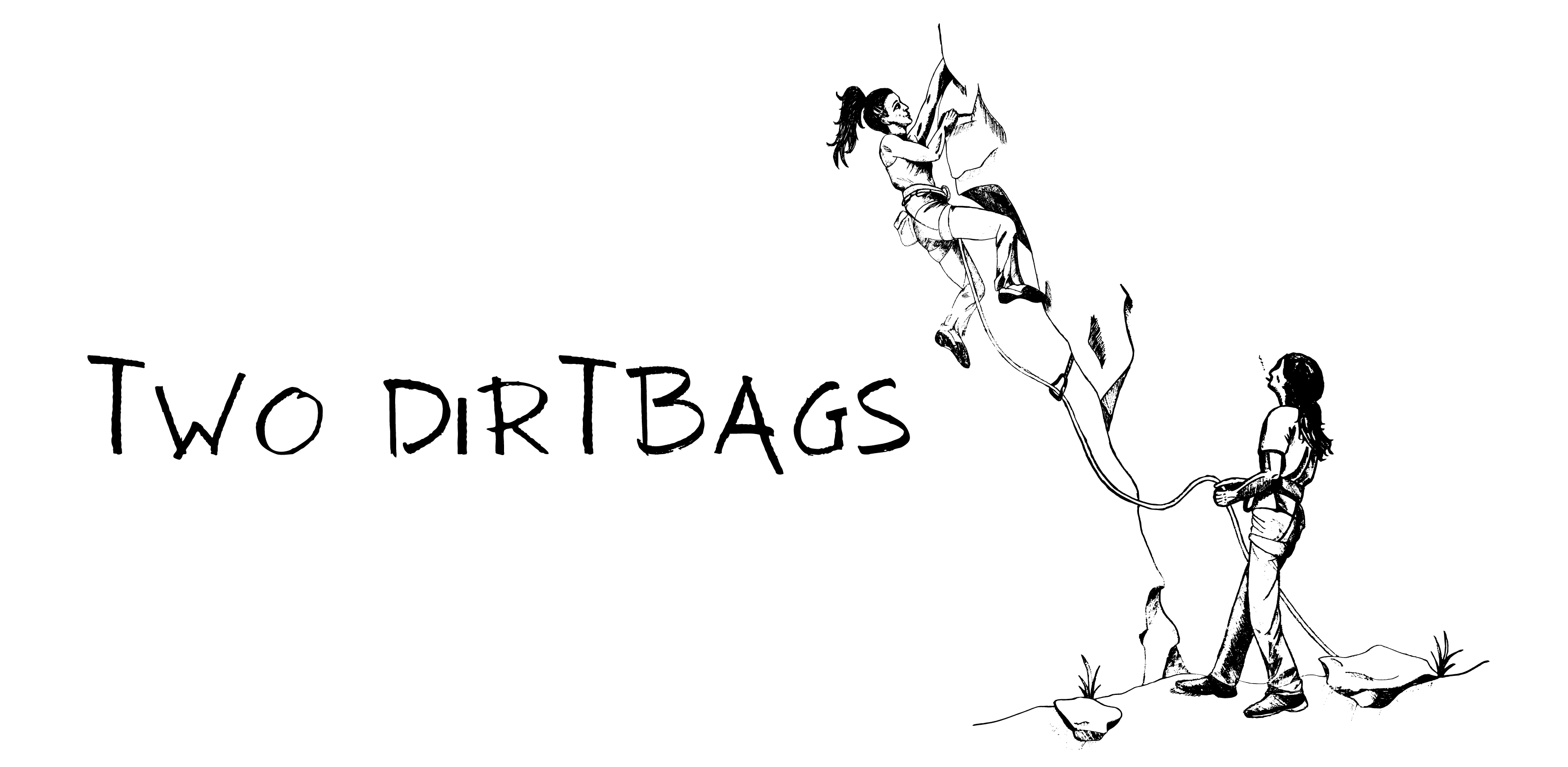
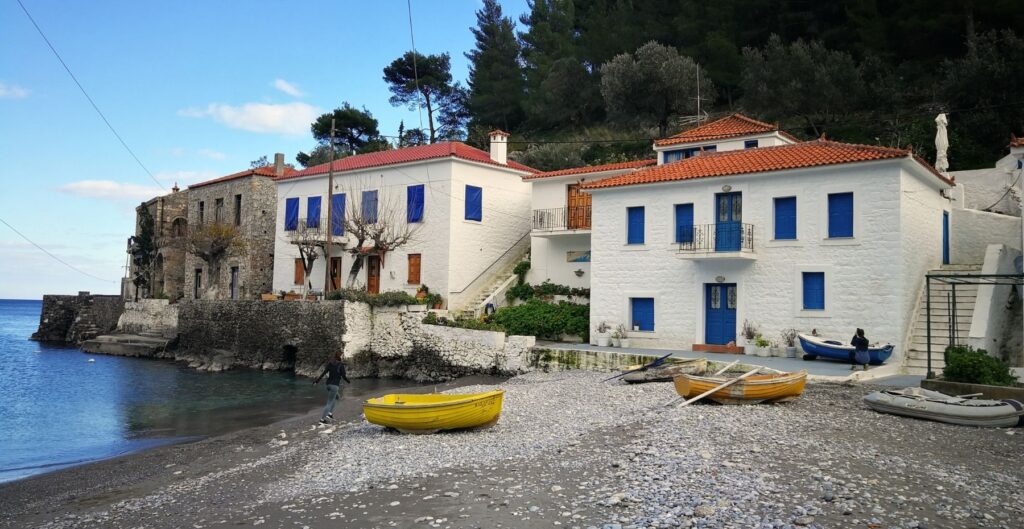
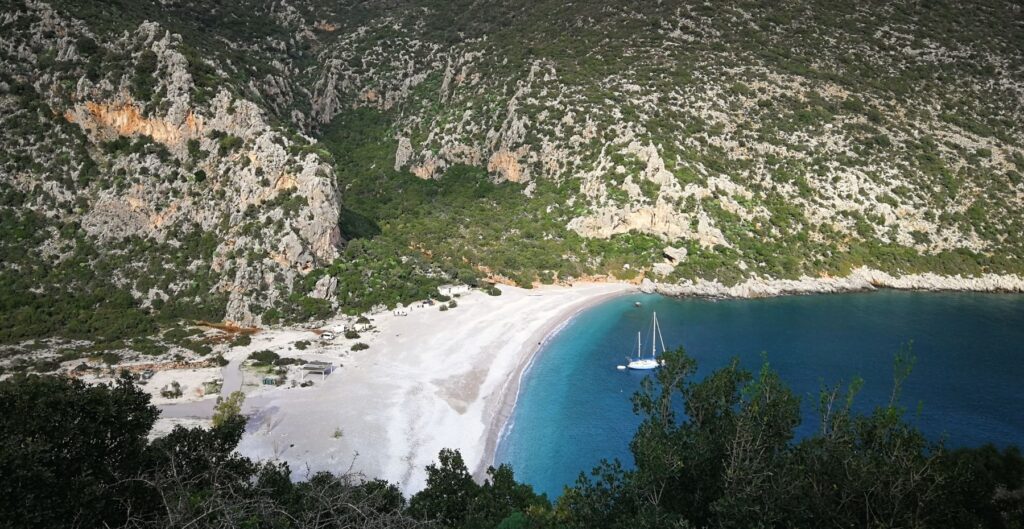
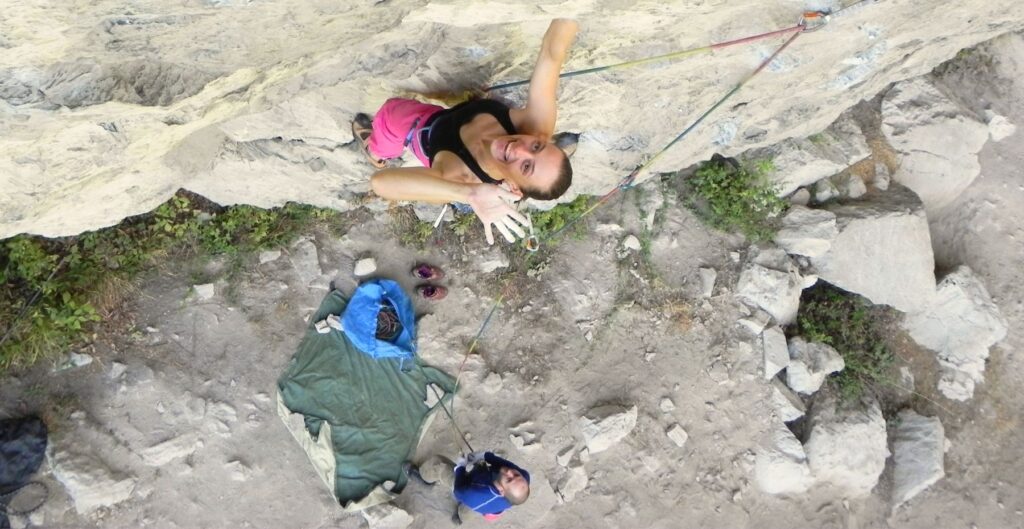
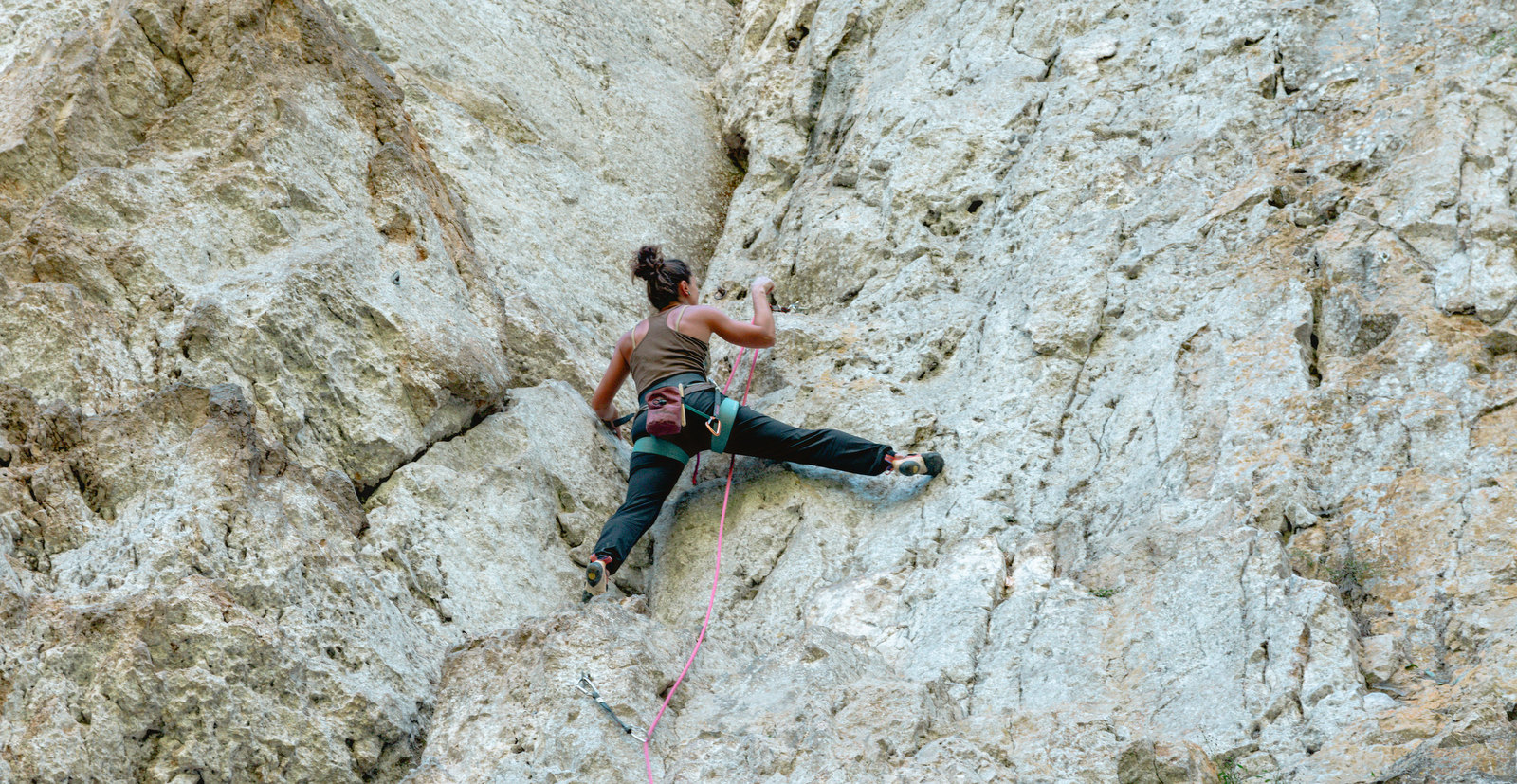
Pingback: Dirtbagging and Climbing in Kyparissi, Greece - Two Dirtbags